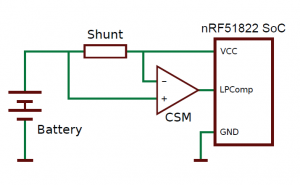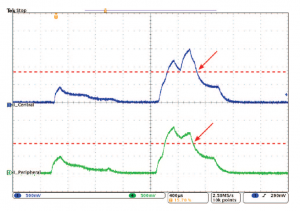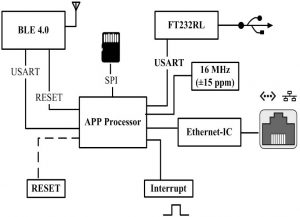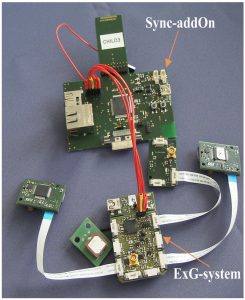Paper Summary
| Paper Name | Precise Synchronization Time Stamp Generation for Bluetooth Low Energy |
| Paper Overview | Because of the non-deterministic delay in BLE stack, time synchronization for BLE is more challenging than based wireless network. This paper found a “power consumption” based time stamping to achieve the best-known time synchronization for BLE. |
| Hardware Design |
(Fig. 1. Hardware design)
(Fig. 2. Output voltage of the CSM) |
| Proposed Method | Consider the propagation time of packet between master and slave is effectively 0, the global time of packet leaving master and received by slave must be the same. In this paper, a Current Shunt Monitor(CSM) is used to observe the power consumption of the nRF51822 SoC. It is configured to generate a hardware IRQ when the output voltage of the CSM deceeds the threshold of 1.125V. This way, a time stamping interrupt is fired at the end of a connection event just where the radio is switched off. |
| Paper Name | Wireless Time Synchronization of a Collaborative Brain-Computer-Interface using Bluetooth Low Energy |
| Paper Overview | Collaborative Brain-Computer Interface, a type of BCIs can be used for group decision making. Using collaborative BCI, it was shown that errors on a decision making based on a visual perception task is reduced to 4% for group of 6 or 7 users in comparison to 11.5% of a single-user decision. However, the EEG signals acquired from a group of users are not time synchronized, which leads to a worse precision.
In this paper, a novel modular concept of a time synchronization for group experiment scenario is describe. |
| Hardware Design | 
(Fig. 1. Conceptual diagram)
(Fig. 2. Sync-Center(SC) and Sync-AddOn(SA) design.)
(Fig. 3 Single prototype) |
| Proposed Method | 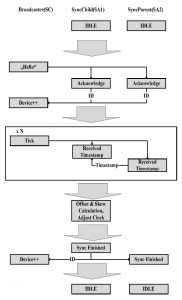
(Fig. 4. Synchronization flow diagram)\ In this protocol the SC first broadcasted a “Tick” in a periodic interval (T) and N number of the times. It was assumed that the node with minimum timestamp received the timestamp first and it is chosen as a SyncParent which provides the global time in the netwrok. In each round every node stores its own timestamp along with the minimum timestamp as a reference. As soon as it reaches the predefined number of the sync-points (N), it adjusted its clock after calculating its offset and skew using linear regression. |

